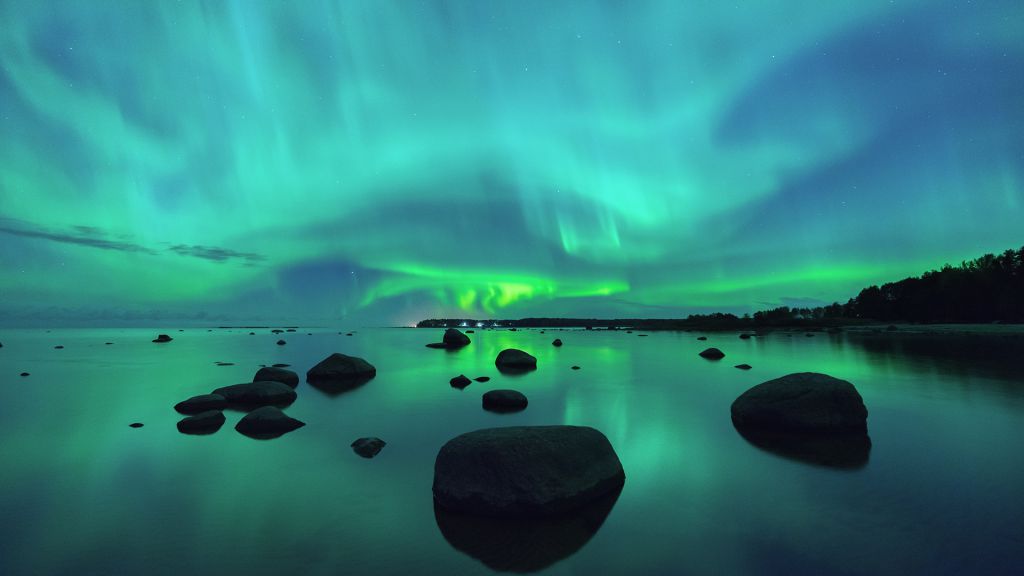
A powerful M9.8-class solar flare erupted from the sun on Wednesday (Nov. 29) at 2:50 p.m. EST (1950 GMT), hurling a super-hot plasma eruption known as a coronal mass ejection (CME) toward Earth.
The recent eruption, coupled with the multiple CMEs fired off from the sun the previous day (Nov. 27), means geomagnetic storms — disturbances to Earth's magnetic field — are likely. Aurora chasers are on high alert for some potentially very impressive displays.
Related: Solar maximum will arrive sooner and last longer than previously expected, say scientists

If you capture photos of the aurora displays and would like them to be considered for a photo roundup story please email them over to spacephotos@space.com.
The M9.8-class was only just a few percentage points away from being categorized as X-class, the most powerful class of solar flare. M-class flares are 10 times smaller than X-class flares, then C-class, B-class and finally A-class flares which are too weak to significantly affect Earth. Within each letter class, a finer scale from 1 to 9 gives the flare assessment greater precision with larger numbers representing more powerful flares within the class.
The Earth-directed components from the recent eruptions could arrive as soon as late Wednesday, Nov. 29 EST (early Thursday, Nov. 30 (UTC) with subsequent CMEs anticipated to arrive nearer the end of Nov. 30 EST (early Friday, Dec. 1 UTC), according to the National Oceanic Atmospheric Administration (NOAA) Space Weather Prediction Center.
NOAA ranks geomagnetic storms — solar disturbances in Earth's atmosphere — on a scale running from G1, which could cause an increase in auroral activity around the poles and minor fluctuations in power supplies, up to G5. This most extreme level can cause complete HF (high frequency) radio blackouts on the entire sunlit side of the Earth, lasting for a number of hours.
Current predictions suggest that G1 conditions are likely on Thursday (Nov. 30) , followed by G2 on Friday (Dec. 1) as additional CMEs hit.

It's possible that the CME released from the M9.8 flare could catch up with slower CMEs released the day prior, resulting in a 'cannibal CME' that could trigger an even stronger G3-class geomagnetic storm, according to Spaceweather.com.
Space weather physicist Tamitha Skov took to X (formerly known as Twitter) to describe the upcoming impact.
"The storm is predicted to hit Earth by midday December 1. Along with two earlier storms already en route means we have a 1,2,3-punch if the magnetic field is oriented correctly," Skov wrote.
According to Skov, we can expect auroras to reach farther into the mid-latitudes.
A Direct Hit! The impressive #solarstorm launched in the Earth-strike zone has been modeled by NASA. The storm is predicted to hit Earth by midday December 1. Along with two earlier storms already en route means we have a 1,2,3-punch. If the magnetic field is oriented correctly,… pic.twitter.com/XLCAbmjXZ7November 29, 2023
Where to look
The northern lights are typically viewed from high latitudes, often confined to Alaska, northern Canada and northern Europe. But during times of heightened solar activity with particularly powerful solar eruptions, it becomes possible to see the aurora borealis much farther south (and the southern lights, or aurora australis, farther north).
If you're hoping to catch a glimpse of the aurora, you should try and head to a dark location, away from bright city lights. Make sure to keep an eye on the northern skies (or southern skies if located in the Southern Hemisphere), making periodic checks at regular intervals. Auroras are rather fickle and can lie dormant, before suddenly flaring up at a moment's notice.
If you're unable to make it outside to hunt for auroras in person we have compiled a list of some of the best aurora webcams so you can enjoy the thrill of the northern lights from the comfort of your own home.
If you capture photos of the aurora displays and would like them to be considered for a photo roundup story please email them over to spacephotos@space.com.
Update 11/29: The solar flare erupted from the sun on Wednesday (Nov. 29). This article has been updated to reflect that.







